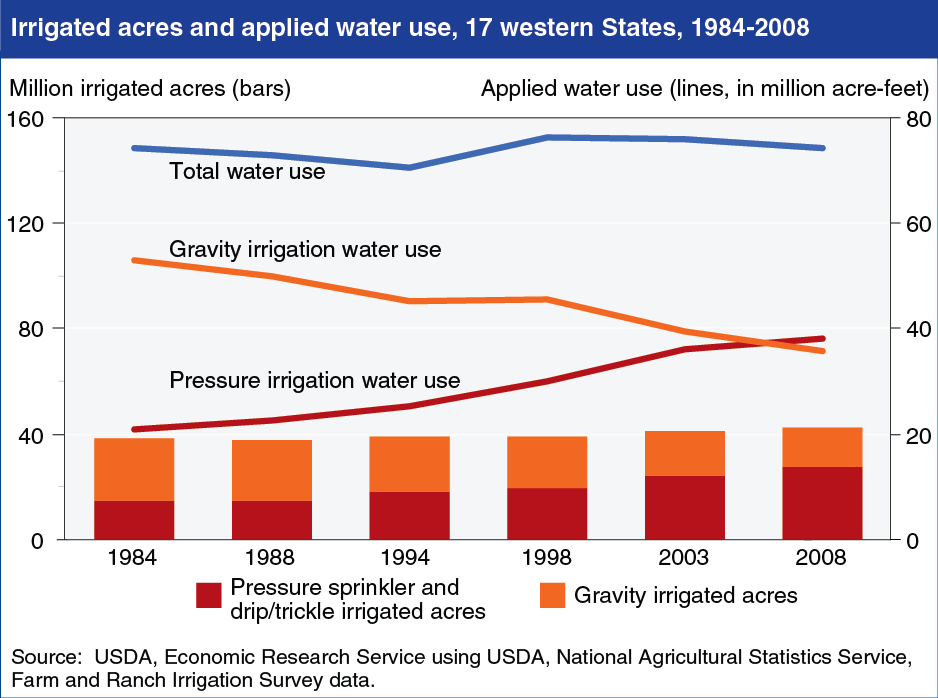Western U.S. irrigated agriculture is shifting to more efficient methods
- by Glenn Schaible
- 9/8/2014

About 75 percent of irrigated cropland in the U.S. is located in 17 western States based on the 2008 Farm and Ranch Irrigation Survey (the most recent available), conducted by USDA’s National Agricultural Statistics Service. While the amount of irrigated land in the West has increased by over 2 million acres since 1984, the amount of water applied has declined slightly as irrigation systems have shifted toward more efficient methods. In 1984, 71 percent of Western crop irrigation water was applied using gravity irrigation systems that tend to use water inefficiently. By 2008, operators used gravity systems to apply just 48 percent of water for crop production while pressure-sprinkler irrigation systems, which can apply water more efficiently, accounted for 51.5 percent of irrigation water use. In 2008, much of the acreage using pressure irrigation systems included drip, low-pressure sprinkler, or low-energy precision application systems. Improved pressure-sprinkler systems resulted in remarkably stable agricultural water use over the past 25 years, as fewer acre-feet were required to irrigate an increasing number of acres. This chart is found in Water Conservation in Irrigated Agriculture: Trends and Challenges in the Face of Emerging Demands, EIB-99, September 2012.

